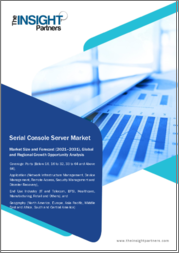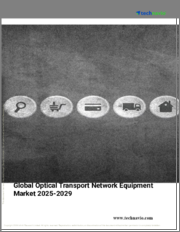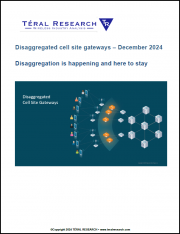
|
시장보고서
상품코드
1618741
세계의 네트워크 스위치 시장 : 유형별, 네트워크 아키텍처별, 기능별, 데이터 속도별, 최종 사용자별 예측(2025-2030년)Network Switches Market by Type (Fixed Configuration Switches, Modular Switches), Network Architecture (Access Port, Hybrid Port, Trunk Port), Functionality, Data Speed, End-User - Global Forecast 2025-2030 |
||||||
네트워크 스위치 시장은 2023년에 335억 6,000만 달러로 평가되었고, 2024년에는 355억 5,000만 달러에 도달할 것으로 예측되며, CAGR 6.43%로 성장하고, 2030년에는 519억 3,000만 달러에 달할 것으로 예측됩니다.
네트워크 스위치는 다양한 네트워크 환경에서 사용되는 중요한 구성 요소로, 장치 간의 데이터 패킷을 지시합니다. 네트워크 스위치의 필요성은 고속 데이터 전송 수요 증가와 IT 인프라의 복잡성 때문입니다. 네트워크 스위치는 데이터센터 및 클라우드 서비스에서 기업 및 산업 환경에 이르기까지 원활한 연결성, 최적화된 네트워크 트래픽 및 보안 프로토콜을 강화하는 데 필수적인 용도입니다. 통신, IT, 은행/금융서비스/보험(BFSI), 건강 관리, 교육, 정부 기관 등 강력한 네트워킹 솔루션에 크게 의존하는 분야가 포함됩니다.
| 주요 시장 통계 | |
|---|---|
| 기준년(2023) | 335억 6,000만 달러 |
| 예측년(2024) | 355억 5,000만 달러 |
| 예측년(2030) | 519억 3,000만 달러 |
| CAGR(%) | 6.43% |
네트워크 스위치 시장에 영향을 미치는 주요 성장 요인으로는 클라우드 컴퓨팅의 보급, 사물 인터넷(IoT) 디바이스의 상승, 세계 광대역 서비스 확대 등이 있습니다. 5G 기술의 등장은 스위치 설계와 기능 혁신의 기회를 제공하고 수요를 더욱 높일 것으로 예상됩니다. 소프트웨어 정의 네트워킹과 네트워크 기능 가상화로의 전환은 기업이 지능적이고 적응력이 높은 스위치 솔루션을 개발하도록 촉구합니다.
시장 전망은 밝은 것, 초기 도입 비용의 높이와 기술적 진부화의 빠름, 복잡한 통합 프로세스 등 일정한 한계와 과제도 있습니다. 또한 사이버 보안 위협은 네트워크 스위치 인프라에 심각한 위험을 초래하므로 보안 강화에 대한 지속적인 투자가 필요합니다.
기술 혁신의 가능성이 있는 분야로는 에너지 효율적인 스위치 개발, AI 주도 네트워크 관리 시스템 강화, 에지 컴퓨팅 프레임워크와 원활하게 통합할 수 있는 스위치 등이 있습니다. 기업은 경쟁력을 유지하기 위해 동적 네트워크 구성 조사, 네트워크 최적화를 위한 데이터 분석 개선, 주요 하이테크 기업과의 협업에 주력해야 합니다. 시장 역학은 점점 역동적이 되고 경쟁이 치열해지고 있기 때문에 끊임없는 혁신과 새로운 기술 동향과 고객 수요에 대한 적응이 요구되고 있습니다. 적응하고 혁신할 수 있는 기업은 이 진화하는 상황에서 새로운 기회를 얻고 경쟁 우위를 획득할 가능성이 높습니다.
시장 역학: 빠르게 진화하는 네트워크 스위치 시장의 주요 시장 인사이트 공개
네트워크 스위치 시장은 수요 및 공급의 역동적인 상호작용에 의해 변모를 이루고 있습니다. 그리고 새로운 비즈니스 기회 획득에 대비하는 것 이러한 동향을 종합적으로 파악함으로써 기업은 정치적, 지리적, 기술적, 사회적, 경제적 영역에 걸친 다양한 위험을 완화할 수 있으며, 또한 소비자 행동 그리고 그것이 제조 비용과 구매 동향에 미치는 영향을보다 명확하게 이해할 수 있습니다.
- 시장 성장 촉진요인
- 인터넷 보급률의 상승과 통신 서비스의 효율적인 관리에 대한 높은 요구
- 선진 경제 국가 및 신흥 경제 국가에서 클라우드 및 에지 컴퓨팅 서비스 수요 증가
- 통신 서비스 제공업체, 클라우드 기반의 솔루션 제공업체, 정부 기관이 운영하는 데이터센터 증가
- 시장 성장 억제요인
- 네트워크 스위치와 관련된 대역폭 변동 및 장치 호환성 문제
- 시장 기회
- 스마트 그리드, 지능형 철도 및 교통, 보안 및 모니터링, 기타 유틸리티 등 산업 인프라에서 네트워크 스위치의 응용 확대
- 네트워크 보안, 민첩성, 자동화를 보장하는 네트워크 스위치의 지속적인 개발
- 시장의 과제
- 데이터에의 액세스를 용이하게 하기 위한, 자립적으로 강화된 데이터 서버의 존재
Porter's Five Force : 네트워크 스위치 시장을 탐색하는 전략 도구
Porter's Five Force Framework는 네트워크 스위치 시장 경쟁 구도를 이해하는 중요한 도구입니다. 기업이 시장 내 세력도를 평가하고 신규 사업의 수익성을 판단하는 데 도움이 됩니다. 더 강인한 시장에서 포지셔닝을 보장 할 수 있습니다.
PESTLE 분석 : 네트워크 스위치 시장에서 외부로부터의 영향 파악
외부 거시 환경 요인은 네트워크 스위치 시장의 성과 역학을 형성하는 데 매우 중요한 역할을합니다. PESTLE 요인을 조사함으로써 기업은 잠재적인 위험과 기회를 더 잘 이해할 수 있습니다. 앞으로 예상한 적극적인 의사 결정을 할 준비가 되어 있습니다.
시장 점유율 분석 : 네트워크 스위치 시장 경쟁 구도 파악
네트워크 스위치 시장의 상세한 시장 점유율 분석을 통해 공급업체의 성과를 종합적으로 평가할 수 있습니다. 이 분석은 시장 집중, 단편화 및 통합 동향을 명확히하고 벤더는 경쟁이 치열 해짐에 따라 자사의 지위를 높이는 전략적 의사 결정을 내리는 데 필요합니다.
FPNV 포지셔닝 매트릭스 : 네트워크 스위치 시장에서 공급업체의 성능 평가
FPNV 포지셔닝 매트릭스는 네트워크 스위치 시장에서 벤더를 평가하는 중요한 도구입니다. 기본 결정을 내릴 수 있습니다. 네 가지 사분면을 통해 벤더를 명확하고 정확하게 분할하고 전략 목표에 가장 적합한 파트너 및 솔루션을 파악할 수 있습니다.
전략 분석 및 권장 : 네트워크 스위치 시장에서 성공을 위한 길을 그리기
네트워크 스위치 시장의 전략 분석은 세계 시장에서의 프레즌스 강화를 목표로 하는 기업에 필수적인 요소입니다. 이러한 접근 방식을 통해 경쟁 구도에서 과제를 극복하고 새로운 비즈니스 기회를 활용하여 장기적인 성공을 거둘 수 있는 체제를 구축할 수 있습니다.
이 보고서는 주요 관심 분야를 포괄하는 시장의 종합적인 분석을 제공합니다.
1. 시장 침투: 현재 시장 환경의 상세한 검토, 주요 기업의 광범위한 데이터, 시장 도달범위 및 전반적인 영향력 평가.
2. 시장 개척도: 신흥 시장의 성장 기회를 파악하고 기존 분야의 확장 가능성을 평가하며 미래 성장을 위한 전략적 로드맵을 제공합니다.
3. 시장 다양화: 최근 제품 출시, 미개척 지역, 업계의 주요 진보, 시장을 형성하는 전략적 투자를 분석합니다.
4. 경쟁 평가 및 정보 : 경쟁 구도를 철저히 분석하여 시장 점유율, 사업 전략, 제품 포트폴리오, 인증, 규제 당국 승인, 특허 동향, 주요 기업의 기술 진보 등을 검증합니다.
5. 제품 개발 및 혁신 : 미래 시장 성장을 가속할 것으로 예상되는 최첨단 기술, R&D 활동, 제품 혁신을 강조합니다.
또한 이해관계자가 충분한 정보를 얻고 의사결정을 할 수 있도록 중요한 질문에 대답하고 있습니다.
1. 현재 시장 규모와 향후 성장 예측은?
2. 최고의 투자 기회를 제공하는 제품, 부문 및 지역은 어디입니까?
3. 시장을 형성하는 주요 기술 동향과 규제의 영향은?
4. 주요 벤더의 시장 점유율과 경쟁 포지션은?
5. 벤더 시장 진입·철수 전략의 원동력이 되는 수익원과 전략적 기회는 무엇인가?
목차
제1장 서문
제2장 조사 방법
제3장 주요 요약
제4장 시장 개요
제5장 시장 인사이트
- 시장 역학
- 성장 촉진요인
- 인터넷 보급률의 상승과 통신 서비스의 효율적인 관리에 대한 높은 요구
- 선진국과 신흥국에서의 클라우드 및 엣지 컴퓨팅 서비스 수요 증가
- 통신 서비스 제공업체, 클라우드 기반의 솔루션 제공업체, 정부 기관이 운영하는 데이터센터 증가
- 억제요인
- 네트워크 스위치와 관련된 대역폭 변동과 장치 호환성 문제
- 기회
- 스마트 그리드, 인텔리전트 철도·교통, 보안·감시, 기타 유틸리티 등의 산업 인프라에 있어서의 네트워크 스위치의 응용이 확대
- 네트워크 보안, 민첩성 및 자동화를 보장하기 위해 네트워크 스위치의 지속적인 개발
- 과제
- 데이터에 쉽게 액세스할 수 있는 자립형 확장 데이터 서버의 존재
- 성장 촉진요인
- 시장 세분화 분석
- 유형: 스마트 네트워크 스위치에 대한 큰 수요
- 네트워크 아키텍처: 하이브리드 포트의 보급 확대
- 기능: Power over Ethernet(PoE) 포트의 새로운 전개
- 최종 사용자: 통신 사업자에 의한 이용 확대
- Porter's Five Forces 분석
- PESTEL 분석
- 정치적
- 경제
- 사교
- 기술적
- 법률상
- 환경
제6장 네트워크 스위치 시장 : 유형별
- 고정 구성 스위치
- 매니지드 스위치
- 스마트 스위치
- 비관리형 스위치
- 모듈식 스위치
제7장 네트워크 스위치 시장 : 네트워크 아키텍처
- 액세스 포트
- 하이브리드 포트
- 트렁크 포트
제8장 네트워크 스위치 시장 : 기능별
- 콤보 포트
- 파워 오버 이더넷(PoE) 포트
- 스택 포트
제9장 네트워크 스위치 시장 : 데이터 속도별
- 10기가비트 이더넷
- 100기가비트 이더넷
- 100MbE 및 1GbE
- 2.5GbE 및 5GbE
- 200GbE 및 400GbE
- 25GbE 및 50GbE
제10장 네트워크 스위치 시장 : 최종 사용자별
- 기업 및 산업용도
- 서버 및 스토리지 제공업체
- 통신 사업자
제11장 아메리카 네트워크 스위치 시장
- 아르헨티나
- 브라질
- 캐나다
- 멕시코
- 미국
제12장 아시아태평양의 네트워크 스위치 시장
- 호주
- 중국
- 인도
- 인도네시아
- 일본
- 말레이시아
- 필리핀
- 싱가포르
- 한국
- 대만
- 태국
- 베트남
제13장 유럽·중동 및 아프리카의 네트워크 스위치 시장
- 덴마크
- 이집트
- 핀란드
- 프랑스
- 독일
- 이스라엘
- 이탈리아
- 네덜란드
- 나이지리아
- 노르웨이
- 폴란드
- 카타르
- 러시아
- 사우디아라비아
- 남아프리카
- 스페인
- 스웨덴
- 스위스
- 터키
- 아랍에미리트(UAE)
- 영국
제14장 경쟁 구도
- 시장 점유율 분석 2023
- FPNV 포지셔닝 매트릭스, 2023
- 경쟁 시나리오 분석
- Marvell Teralynx 10 51.2T 이더넷 스위치가 세계 AI 클라우드 배포를 위해 양산 개시
- Airtel, 주요 도시를 연결하는 인도 전역의 장거리 네트워크에 Nokia의 OTN 스위치를 도입
- Edgecore Networks, 스마트 빌딩이나 IoT 대응 시설에 전력을 공급하는 최첨단 접속 기능을 갖춘 새로운 스위치를 발표
- Broadcom Jericho3-AI 이더넷 스위치 출시
- 전략 분석과 제안
기업 목록
- ALE International
- Allied Telesis, Inc.
- ANTAIRA TECHNOLOGIES, LLC
- Arista Networks, Inc.
- Axis Communications AB
- B & H Foto & Electronics Corp
- Beijer Electronics, Inc.
- Broadcom Inc.
- Buffalo Americas, Inc.
- Cisco Systems, Inc.
- Comark Technology Co.,Ltd.
- CommScope, Inc.
- D-Link Systems, Inc.
- Dell Inc.
- Emerson Electric Co.
- EnGenius Technologies, Inc.
- Extreme Networks, Inc.
- Fortinet, Inc.
- FS.com GmbH
- FS.com Inc.
- Fujitsu Limited
- Grandstream Networks, Inc.
- Hewlett Packard Enterprise Development LP
- Honeywell International Inc.
- Huawei Technologies Co., Ltd.
- IP Infusion
- Juniper Networks, Inc.
- Lantronix, Inc.
- Larch Networks Ltd.
- LINKOH
- Linksys Holdings, Inc.
- Lubi Electronics
- Micro Electronics, Inc.
- Monoprice, Inc.
- NEC Corporation
- NETGEAR Inc.
- Newegg Inc.
- NVIDIA Corporation
- Omnitron Systems Technology, Inc.
- Perle
- Pica8, Inc.
- Planet Technology
- QNAP Systems, Inc.
- SALZ Automation GmbH
- SonicWall, Inc.
- STORDIS GmbH
- TITAN Commerce Continental Services GmbH
- TRENDnet, Inc.
- VVDN Technologies
- Whaley Communications
The Network Switches Market was valued at USD 33.56 billion in 2023, expected to reach USD 35.55 billion in 2024, and is projected to grow at a CAGR of 6.43%, to USD 51.93 billion by 2030.
Network switches are critical components used in various networking environments to direct data packets between devices. Their primary role is to facilitate communication within a network by processing and routing data efficiently. The necessity of network switches stems from the increasing demand for high-speed data transmission and the growing complexity of IT infrastructure. In applications ranging from data centers and cloud services to enterprise and industrial settings, network switches are essential for ensuring seamless connectivity, optimized network traffic, and enhanced security protocols. The end-use scope includes sectors like telecommunications, IT, BFSI, healthcare, education, and government, which rely heavily on robust networking solutions.
| KEY MARKET STATISTICS | |
|---|---|
| Base Year [2023] | USD 33.56 billion |
| Estimated Year [2024] | USD 35.55 billion |
| Forecast Year [2030] | USD 51.93 billion |
| CAGR (%) | 6.43% |
Key growth factors influencing the network switches market include the proliferation of cloud computing, the rise of Internet of Things (IoT) devices, and the expansion of broadband services globally. The advent of 5G technology is expected to further bolster demand, offering opportunities for innovation in switch design and functionality. The shift towards software-defined networking and network functions virtualization is prompting companies to develop more intelligent and adaptive switch solutions.
Despite the market's promising outlook, there are certain limitations and challenges, such as high initial deployment costs, rapid technological obsolescence, and complex integration processes. Additionally, cybersecurity threats pose significant risks to network switch infrastructures, necessitating ongoing investment in security enhancements.
Potential areas of innovation include the development of energy-efficient switches, enhanced AI-driven network management systems, and switches capable of seamlessly integrating with edge computing frameworks. Businesses should focus on research in dynamic network configuration, improved data analytics for network optimization, and collaboration with leading tech firms to stay competitive. The nature of the network switches market is increasingly dynamic and competitive, demanding constant innovation and adaptation to emerging technological trends and customer demands. Companies that can adapt and innovate are likely to gain a competitive advantage, capturing new opportunities in this evolving landscape.
Market Dynamics: Unveiling Key Market Insights in the Rapidly Evolving Network Switches Market
The Network Switches Market is undergoing transformative changes driven by a dynamic interplay of supply and demand factors. Understanding these evolving market dynamics prepares business organizations to make informed investment decisions, refine strategic decisions, and seize new opportunities. By gaining a comprehensive view of these trends, business organizations can mitigate various risks across political, geographic, technical, social, and economic domains while also gaining a clearer understanding of consumer behavior and its impact on manufacturing costs and purchasing trends.
- Market Drivers
- Rise in internet penetration and high requirement for efficient management of telecom services
- Augmented demand for cloud & edge computing services across developed and emerging economies
- Increasing number of data centers operated by telecommunication service providers, cloud-based solution providers, and government agencies
- Market Restraints
- Bandwidth fluctuation and device compatibility issues associated with the network switches
- Market Opportunities
- Growing application of network switch in industrial infrastructures, such as smart grid, intelligent rail & traffic, security & surveillance, and other utilities
- Continuous development in network switches to ensure network security, agility, and automation
- Market Challenges
- Presence of self-reliant enhanced data servers to easily access the data
Porter's Five Forces: A Strategic Tool for Navigating the Network Switches Market
Porter's five forces framework is a critical tool for understanding the competitive landscape of the Network Switches Market. It offers business organizations with a clear methodology for evaluating their competitive positioning and exploring strategic opportunities. This framework helps businesses assess the power dynamics within the market and determine the profitability of new ventures. With these insights, business organizations can leverage their strengths, address weaknesses, and avoid potential challenges, ensuring a more resilient market positioning.
PESTLE Analysis: Navigating External Influences in the Network Switches Market
External macro-environmental factors play a pivotal role in shaping the performance dynamics of the Network Switches Market. Political, Economic, Social, Technological, Legal, and Environmental factors analysis provides the necessary information to navigate these influences. By examining PESTLE factors, businesses can better understand potential risks and opportunities. This analysis enables business organizations to anticipate changes in regulations, consumer preferences, and economic trends, ensuring they are prepared to make proactive, forward-thinking decisions.
Market Share Analysis: Understanding the Competitive Landscape in the Network Switches Market
A detailed market share analysis in the Network Switches Market provides a comprehensive assessment of vendors' performance. Companies can identify their competitive positioning by comparing key metrics, including revenue, customer base, and growth rates. This analysis highlights market concentration, fragmentation, and trends in consolidation, offering vendors the insights required to make strategic decisions that enhance their position in an increasingly competitive landscape.
FPNV Positioning Matrix: Evaluating Vendors' Performance in the Network Switches Market
The Forefront, Pathfinder, Niche, Vital (FPNV) Positioning Matrix is a critical tool for evaluating vendors within the Network Switches Market. This matrix enables business organizations to make well-informed decisions that align with their goals by assessing vendors based on their business strategy and product satisfaction. The four quadrants provide a clear and precise segmentation of vendors, helping users identify the right partners and solutions that best fit their strategic objectives.
Strategy Analysis & Recommendation: Charting a Path to Success in the Network Switches Market
A strategic analysis of the Network Switches Market is essential for businesses looking to strengthen their global market presence. By reviewing key resources, capabilities, and performance indicators, business organizations can identify growth opportunities and work toward improvement. This approach helps businesses navigate challenges in the competitive landscape and ensures they are well-positioned to capitalize on newer opportunities and drive long-term success.
Key Company Profiles
The report delves into recent significant developments in the Network Switches Market, highlighting leading vendors and their innovative profiles. These include ALE International, Allied Telesis, Inc., ANTAIRA TECHNOLOGIES, LLC, Arista Networks, Inc., Axis Communications AB, B & H Foto & Electronics Corp, Beijer Electronics, Inc., Broadcom Inc., Buffalo Americas, Inc., Cisco Systems, Inc., Comark Technology Co.,Ltd., CommScope, Inc., D-Link Systems, Inc., Dell Inc., Emerson Electric Co., EnGenius Technologies, Inc., Extreme Networks, Inc., Fortinet, Inc., FS.com GmbH, FS.com Inc., Fujitsu Limited, Grandstream Networks, Inc., Hewlett Packard Enterprise Development LP, Honeywell International Inc., Huawei Technologies Co., Ltd., IP Infusion, Juniper Networks, Inc., Lantronix, Inc., Larch Networks Ltd., LINKOH, Linksys Holdings, Inc., Lubi Electronics, Micro Electronics, Inc., Monoprice, Inc., NEC Corporation, NETGEAR Inc., Newegg Inc., NVIDIA Corporation, Omnitron Systems Technology, Inc., Perle, Pica8, Inc., Planet Technology, QNAP Systems, Inc., SALZ Automation GmbH, SonicWall, Inc., STORDIS GmbH, TITAN Commerce Continental Services GmbH, TRENDnet, Inc., VVDN Technologies, and Whaley Communications.
Market Segmentation & Coverage
This research report categorizes the Network Switches Market to forecast the revenues and analyze trends in each of the following sub-markets:
- Based on Type, market is studied across Fixed Configuration Switches and Modular Switches. The Fixed Configuration Switches is further studied across Managed Switches, Smart Switches, and Unmanaged Switches.
- Based on Network Architecture, market is studied across Access Port, Hybrid Port, and Trunk Port.
- Based on Functionality, market is studied across Combo Port, Power over Ethernet (PoE) Port, and Stack Port.
- Based on Data Speed, market is studied across 10 GbE, 100 GbE, 100 MbE & 1 GbE, 2.5 GbE & 5 GbE, 200 GbE & 400 GbE, and 25 GbE & 50 GbE.
- Based on End-User, market is studied across Enterprise & Industrial Use, Servers & Storage Providers, and Telecommunication Providers.
- Based on Region, market is studied across Americas, Asia-Pacific, and Europe, Middle East & Africa. The Americas is further studied across Argentina, Brazil, Canada, Mexico, and United States. The United States is further studied across California, Florida, Illinois, New York, Ohio, Pennsylvania, and Texas. The Asia-Pacific is further studied across Australia, China, India, Indonesia, Japan, Malaysia, Philippines, Singapore, South Korea, Taiwan, Thailand, and Vietnam. The Europe, Middle East & Africa is further studied across Denmark, Egypt, Finland, France, Germany, Israel, Italy, Netherlands, Nigeria, Norway, Poland, Qatar, Russia, Saudi Arabia, South Africa, Spain, Sweden, Switzerland, Turkey, United Arab Emirates, and United Kingdom.
The report offers a comprehensive analysis of the market, covering key focus areas:
1. Market Penetration: A detailed review of the current market environment, including extensive data from top industry players, evaluating their market reach and overall influence.
2. Market Development: Identifies growth opportunities in emerging markets and assesses expansion potential in established sectors, providing a strategic roadmap for future growth.
3. Market Diversification: Analyzes recent product launches, untapped geographic regions, major industry advancements, and strategic investments reshaping the market.
4. Competitive Assessment & Intelligence: Provides a thorough analysis of the competitive landscape, examining market share, business strategies, product portfolios, certifications, regulatory approvals, patent trends, and technological advancements of key players.
5. Product Development & Innovation: Highlights cutting-edge technologies, R&D activities, and product innovations expected to drive future market growth.
The report also answers critical questions to aid stakeholders in making informed decisions:
1. What is the current market size, and what is the forecasted growth?
2. Which products, segments, and regions offer the best investment opportunities?
3. What are the key technology trends and regulatory influences shaping the market?
4. How do leading vendors rank in terms of market share and competitive positioning?
5. What revenue sources and strategic opportunities drive vendors' market entry or exit strategies?
Table of Contents
1. Preface
- 1.1. Objectives of the Study
- 1.2. Market Segmentation & Coverage
- 1.3. Years Considered for the Study
- 1.4. Currency & Pricing
- 1.5. Language
- 1.6. Stakeholders
2. Research Methodology
- 2.1. Define: Research Objective
- 2.2. Determine: Research Design
- 2.3. Prepare: Research Instrument
- 2.4. Collect: Data Source
- 2.5. Analyze: Data Interpretation
- 2.6. Formulate: Data Verification
- 2.7. Publish: Research Report
- 2.8. Repeat: Report Update
3. Executive Summary
4. Market Overview
5. Market Insights
- 5.1. Market Dynamics
- 5.1.1. Drivers
- 5.1.1.1. Rise in internet penetration and high requirement for efficient management of telecom services
- 5.1.1.2. Augmented demand for cloud & edge computing services across developed and emerging economies
- 5.1.1.3. Increasing number of data centers operated by telecommunication service providers, cloud-based solution providers, and government agencies
- 5.1.2. Restraints
- 5.1.2.1. Bandwidth fluctuation and device compatibility issues associated with the network switches
- 5.1.3. Opportunities
- 5.1.3.1. Growing application of network switch in industrial infrastructures, such as smart grid, intelligent rail & traffic, security & surveillance, and other utilities
- 5.1.3.2. Continuous development in network switches to ensure network security, agility, and automation
- 5.1.4. Challenges
- 5.1.4.1. Presence of self-reliant enhanced data servers to easily access the data
- 5.1.1. Drivers
- 5.2. Market Segmentation Analysis
- 5.2.1. Type: Significant demand for smart network switches
- 5.2.2. Network Architecture: Increasing penetration of hybrid ports
- 5.2.3. Functionality: Emerging deployment of Power over Ethernet (PoE) Port
- 5.2.4. End-User: Proliferating use by the telecommunication providers
- 5.3. Porter's Five Forces Analysis
- 5.3.1. Threat of New Entrants
- 5.3.2. Threat of Substitutes
- 5.3.3. Bargaining Power of Customers
- 5.3.4. Bargaining Power of Suppliers
- 5.3.5. Industry Rivalry
- 5.4. PESTLE Analysis
- 5.4.1. Political
- 5.4.2. Economic
- 5.4.3. Social
- 5.4.4. Technological
- 5.4.5. Legal
- 5.4.6. Environmental
6. Network Switches Market, by Type
- 6.1. Introduction
- 6.2. Fixed Configuration Switches
- 6.2.1. Managed Switches
- 6.2.2. Smart Switches
- 6.2.3. Unmanaged Switches
- 6.3. Modular Switches
7. Network Switches Market, by Network Architecture
- 7.1. Introduction
- 7.2. Access Port
- 7.3. Hybrid Port
- 7.4. Trunk Port
8. Network Switches Market, by Functionality
- 8.1. Introduction
- 8.2. Combo Port
- 8.3. Power over Ethernet (PoE) Port
- 8.4. Stack Port
9. Network Switches Market, by Data Speed
- 9.1. Introduction
- 9.2. 10 GbE
- 9.3. 100 GbE
- 9.4. 100 MbE & 1 GbE
- 9.5. 2.5 GbE & 5 GbE
- 9.6. 200 GbE & 400 GbE
- 9.7. 25 GbE & 50 GbE
10. Network Switches Market, by End-User
- 10.1. Introduction
- 10.2. Enterprise & Industrial Use
- 10.3. Servers & Storage Providers
- 10.4. Telecommunication Providers
11. Americas Network Switches Market
- 11.1. Introduction
- 11.2. Argentina
- 11.3. Brazil
- 11.4. Canada
- 11.5. Mexico
- 11.6. United States
12. Asia-Pacific Network Switches Market
- 12.1. Introduction
- 12.2. Australia
- 12.3. China
- 12.4. India
- 12.5. Indonesia
- 12.6. Japan
- 12.7. Malaysia
- 12.8. Philippines
- 12.9. Singapore
- 12.10. South Korea
- 12.11. Taiwan
- 12.12. Thailand
- 12.13. Vietnam
13. Europe, Middle East & Africa Network Switches Market
- 13.1. Introduction
- 13.2. Denmark
- 13.3. Egypt
- 13.4. Finland
- 13.5. France
- 13.6. Germany
- 13.7. Israel
- 13.8. Italy
- 13.9. Netherlands
- 13.10. Nigeria
- 13.11. Norway
- 13.12. Poland
- 13.13. Qatar
- 13.14. Russia
- 13.15. Saudi Arabia
- 13.16. South Africa
- 13.17. Spain
- 13.18. Sweden
- 13.19. Switzerland
- 13.20. Turkey
- 13.21. United Arab Emirates
- 13.22. United Kingdom
14. Competitive Landscape
- 14.1. Market Share Analysis, 2023
- 14.2. FPNV Positioning Matrix, 2023
- 14.3. Competitive Scenario Analysis
- 14.3.1. Marvell Teralynx 10 51.2T Ethernet Switch enters volume production for global AI cloud deployments
- 14.3.2. Airtel to Deploy Nokia's OTN Switches in Pan-India Long-Distance Network Connecting Major Cities
- 14.3.3. Edgecore Networks Introduces New Switches with Cutting-Edge Connectivity for Powering Smart Buildings and IoT-enabled Venues
- 14.3.4. Broadcom Jericho3-AI Ethernet Switch Launched
- 14.4. Strategy Analysis & Recommendation
Companies Mentioned
- 1. ALE International
- 2. Allied Telesis, Inc.
- 3. ANTAIRA TECHNOLOGIES, LLC
- 4. Arista Networks, Inc.
- 5. Axis Communications AB
- 6. B & H Foto & Electronics Corp
- 7. Beijer Electronics, Inc.
- 8. Broadcom Inc.
- 9. Buffalo Americas, Inc.
- 10. Cisco Systems, Inc.
- 11. Comark Technology Co.,Ltd.
- 12. CommScope, Inc.
- 13. D-Link Systems, Inc.
- 14. Dell Inc.
- 15. Emerson Electric Co.
- 16. EnGenius Technologies, Inc.
- 17. Extreme Networks, Inc.
- 18. Fortinet, Inc.
- 19. FS.com GmbH
- 20. FS.com Inc.
- 21. Fujitsu Limited
- 22. Grandstream Networks, Inc.
- 23. Hewlett Packard Enterprise Development LP
- 24. Honeywell International Inc.
- 25. Huawei Technologies Co., Ltd.
- 26. IP Infusion
- 27. Juniper Networks, Inc.
- 28. Lantronix, Inc.
- 29. Larch Networks Ltd.
- 30. LINKOH
- 31. Linksys Holdings, Inc.
- 32. Lubi Electronics
- 33. Micro Electronics, Inc.
- 34. Monoprice, Inc.
- 35. NEC Corporation
- 36. NETGEAR Inc.
- 37. Newegg Inc.
- 38. NVIDIA Corporation
- 39. Omnitron Systems Technology, Inc.
- 40. Perle
- 41. Pica8, Inc.
- 42. Planet Technology
- 43. QNAP Systems, Inc.
- 44. SALZ Automation GmbH
- 45. SonicWall, Inc.
- 46. STORDIS GmbH
- 47. TITAN Commerce Continental Services GmbH
- 48. TRENDnet, Inc.
- 49. VVDN Technologies
- 50. Whaley Communications



















